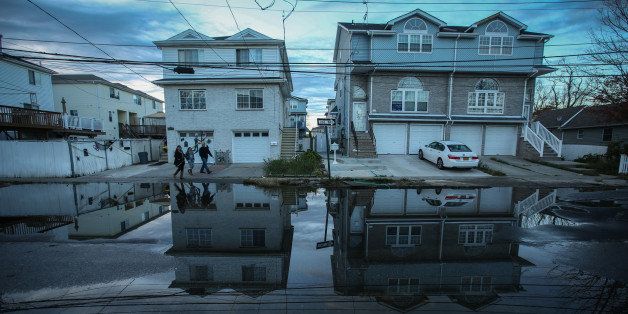
Two years ago, news broke about a hurricane called Sandy that might be headed toward the East Coast. Ultimately, Sandy would leave more than 180 people dead, thousands homeless, and indelible images of a darkened Manhattan and storm-surge waters flooding the tunnels of the New York subway system. The total cost of damages was $60 billion -- the only U.S. hurricane in history that cost more was Katrina in 2005. Many of the hardest-hit communities are still struggling to recover.
Unusually powerful storms like Sandy and Katrina are extreme weather at its most dramatic -- a predictable consequence of a warmer atmosphere and oceans. When you combine such storms with rising sea levels, it's obvious that coastal communities everywhere are vulnerable.
But although we can't prevent more powerful storms, we are far from powerless. We still have time to take action to limit the climate disruption that makes storms more severe. But let's be clear: That time is limited. We can't pass off responsibility to future generations because that tactic has already been used -- on us.
Last week, the European Union showed the rest of the world what taking responsibility looks like by striking an initial deal to require its member countries to cut greenhouse gas emissions 40 percent below 1990 levels by 2030. Could the U.S. make a comparable national commitment? Absolutely. In fact, we could do even better, but only if we force our government to get serious about solving the problem. That will take a powerful, people-driven movement to overcome the money and influence of the corporations whose existence depends on their ability to pollute and exploit without regard for the consequences.
The good news is that such a people-driven movement has already started in this country, and you don't need to look further than the flooding of New York's streets and subways to see it. No, I'm not talking about the storm surge from Sandy but about the human surge of the People's Climate March in Manhattan last month -- the biggest climate demonstration of all time. In fact, so many people filled the streets on that Sunday, September 21, that the same subway system that had been inundated by Sandy set a new ridership record.
The sight of hundreds of thousands of people taking to the streets (and mass transit), united by a common purpose, was a powerful reminder that together we are strong, we are positive, and we are not about to give up on the future.
